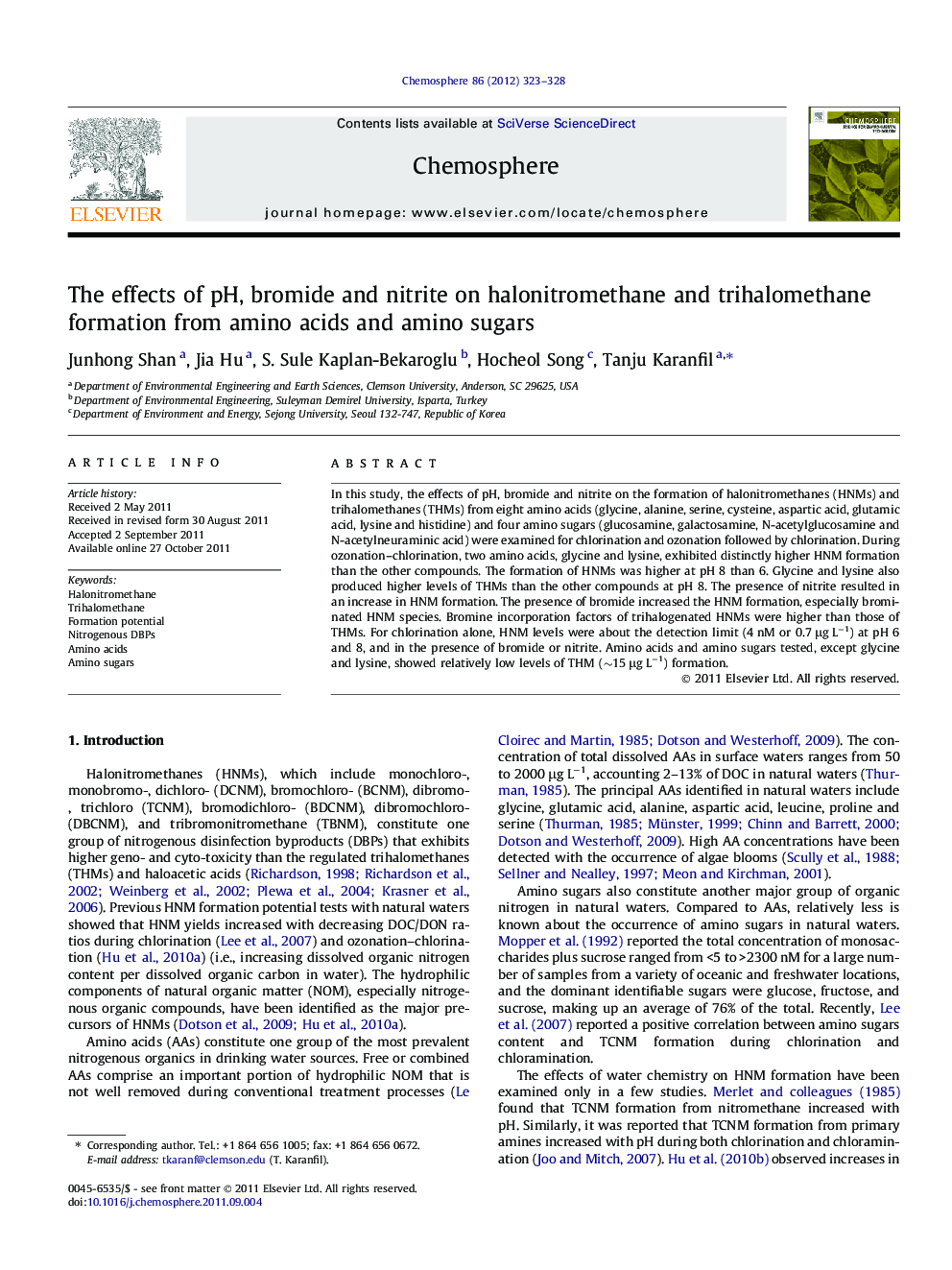| Article ID | Journal | Published Year | Pages | File Type |
|---|---|---|---|---|
| 4410279 | Chemosphere | 2012 | 6 Pages |
In this study, the effects of pH, bromide and nitrite on the formation of halonitromethanes (HNMs) and trihalomethanes (THMs) from eight amino acids (glycine, alanine, serine, cysteine, aspartic acid, glutamic acid, lysine and histidine) and four amino sugars (glucosamine, galactosamine, N-acetylglucosamine and N-acetylneuraminic acid) were examined for chlorination and ozonation followed by chlorination. During ozonation–chlorination, two amino acids, glycine and lysine, exhibited distinctly higher HNM formation than the other compounds. The formation of HNMs was higher at pH 8 than 6. Glycine and lysine also produced higher levels of THMs than the other compounds at pH 8. The presence of nitrite resulted in an increase in HNM formation. The presence of bromide increased the HNM formation, especially brominated HNM species. Bromine incorporation factors of trihalogenated HNMs were higher than those of THMs. For chlorination alone, HNM levels were about the detection limit (4 nM or 0.7 μg L−1) at pH 6 and 8, and in the presence of bromide or nitrite. Amino acids and amino sugars tested, except glycine and lysine, showed relatively low levels of THM (∼15 μg L−1) formation.
► After ozonation-chlorination, lysine and glycine had highest HNM and THM formation. ► HNMs increased with increasing pH, bromide and nitrite for ozonation-chlorination. ► Bromine incorporation by THNMs was higher than THMs during ozonation-chlorination. ► For chlorination alone, HNM levels were about the detection limits at pH 6 and 8. ► The impact of bromide or nitrite on HNM levels was negligible during chlorination.
